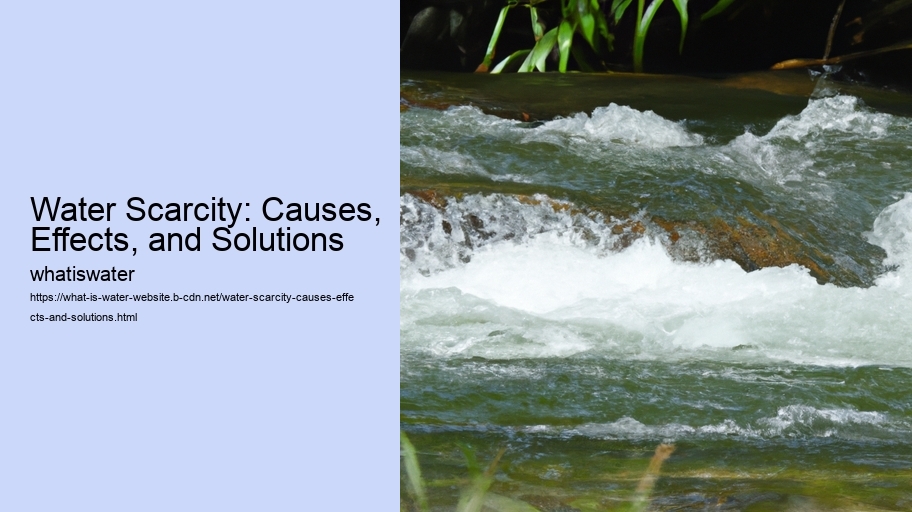Water Scarcity: Causes, Effects, and Solutions - Bottled Water
- Hydrology
- Aquifers
- Water Conflict
- H2O
**Causes**
The root causes of water scarcity can be bifurcated into natural and human-induced categories. Watersheds Climatic variability plays a pivotal role in natural water availability; regions experience droughts due to irregular rainfall patterns or decreased snowmelt. Conversely, overpopulation amplifies demand for finite water resources, propelling us towards a precipice where supply cannot satiate the burgeoning needs.
Human activities significantly exacerbate scarcity issues through pollution from industrial discharges and agricultural runoff, which contaminate freshwater sources.
Water Scarcity: Causes, Effects, and Solutions - Bottled Water
- Water Sports and Recreation
- Hydrology
- Aquifers
Excessive groundwater extraction for agriculture, industry, and personal use further diminishes reserves faster than they can naturally recharge — a practice akin to borrowing from an already overdrawn bank account without any deposits forthcoming.
**Effects**
The ramifications of water scarcity are far-reaching and disproportionately affect marginalized communities. Irrigation Rivers and Lakes Crop yields dwindle without adequate irrigation leading to food insecurity—hunger becomes an unwelcome specter haunting millions worldwide. Water and Sanitation Economic instability ensues as agriculture-based livelihoods falter under the strain of arid conditions.
Health crises escalate with limited access to clean water; diseases such as cholera find breeding grounds in contaminated supplies causing preventable deaths.
Water Scarcity: Causes, Effects, and Solutions - Rivers and Lakes
- Bottled Water
- Water Sports and Recreation
- Hydrology
Environmental degradation follows suit as wetlands dry up and wildlife struggles or fails to adapt to changing habitats wrought by desiccation—an often overlooked tragedy playing out silently across our planet's diverse ecosystems.
**Solutions**
Combatting water scarcity necessitates a tapestry of strategies tailored to regional contexts while recognizing the interconnectedness of global water systems. Conservation practices like rainwater harvesting offer immediate relief by capturing precipitation before it evaporates or runs off unutilized.
Innovative technologies such as desalination convert saline ocean waters into freshwaters; though energy-intensive currently, advancements could make this solution more viable economically and environmentally in time.
Policy reforms must prioritize sustainable management—enforcing regulations on pollution control while incentivizing efficient usage among industries and households alike presents an avenue toward better stewardship of precious H2O commodities.
Water Pollution Community engagement is vital; empowering locals with knowledge about managing their resources ensures long-term success for conservation efforts rather than short-lived initiatives imposed from afar without clear understanding or ownership at grassroots levels.
In conclusion, addressing the multifarious aspects underlying water scarcity demands concerted action across numerous fronts—from individual conservational habits to sweeping policy changes globally if we hope not only survive but thrive amid growing uncertainties surrounding this most essential resource life itself depends upon so precariously balanced within our hands today.
